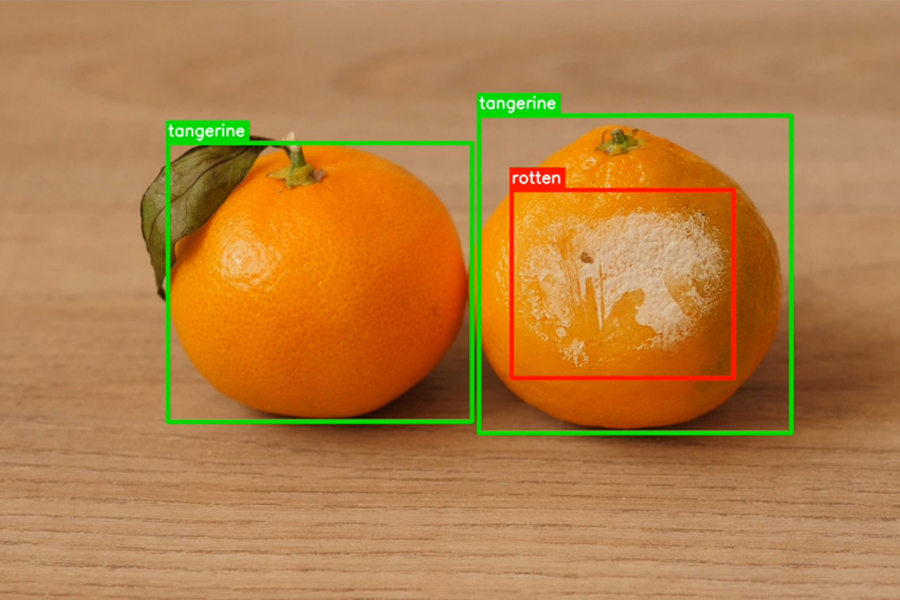Blogs
Oct 26, 2023
Transforming Agriculture with Computer Vision and Synthetic Data
In today's agriculture, the integration of computer vision and synthetic data represents more than just an innovation; it's a revolution. These technologies are fundamentally transforming the way we grow, monitor, and ensure the quality of our crops. One example is the detection of rotten fruit, a known issue for farmers and distributors.

The Challenge of Detecting Rotten Fruit
Traditionally, detecting rotten or spoiled fruit has been a manual and labor-intensive process. Human inspectors sort through the fruits to identify the good from the bad. This method is not only time-consuming and costly but also prone to human error. Inconsistent quality control can lead to financial losses for farmers and dissatisfaction among consumers.
The Role of Computer Vision and Synthetic Data
By utilising cameras and machine learning algorithms, it is possible to analyse images of fruit and identify signs of spoilage without relying on human inspectors. This process is not only faster but also more accurate than manual inspection, ensuring that only high-quality produce reaches the market.
However, training computer vision models to recognise rotten fruit is a complex task. Collecting data in the real world is difficult and often doesn't capture all the different ways that fruit can rot. This is where synthetic data steps in. By generating synthetic images of both healthy and rotten fruits under various conditions, synthetic data provides a comprehensive dataset for training computer vision models. This approach enables the models to learn and recognise a wider array of rotten signs, some of which may be rare or difficult to find in the real world.
However, training computer vision models to recognise rotten fruit is a complex task. Collecting data in the real world is difficult and often doesn't capture all the different ways that fruit can rot. This is where synthetic data steps in. By generating synthetic images of both healthy and rotten fruits under various conditions, synthetic data provides a comprehensive dataset for training computer vision models. This approach enables the models to learn and recognise a wider array of rotten signs, some of which may be rare or difficult to find in the real world.
Detecting Rotten Fruit with syntheticAIdata Enterprise
The syntheticAIdata Enterprise app empowers our customers to simulate various types of rotten fruits using our intuitive interface. The unlimited data feature allows them to generate enough data for training accurate models. A system empowered by this capability helps prevent rotten fruits from burdening our supply chain, contributing to sustainability.
Benefits of using synthetic data in this scenario:
In summary, the combination of computer vision and synthetic data in agriculture can lead to more accurate, efficient, and resilient farming practices. These technologies empower farmers with valuable insights, enabling them to make informed decisions and optimise their operations.
- - Enhanced Training: Provides diverse scenarios for more comprehensive model training.
- - Cost Efficiency: Reduces the need for expensive and time-consuming real-world data collection and manual annotation.
- - Improved Accuracy: Improves the accuracy of computer vision models in detecting rotten fruits.
- - Scalability: Facilitates the expansion of model capabilities to cover more types of crops and conditions.
In summary, the combination of computer vision and synthetic data in agriculture can lead to more accurate, efficient, and resilient farming practices. These technologies empower farmers with valuable insights, enabling them to make informed decisions and optimise their operations.
Request a Demo
We invite you to contact us for further information on how our platform can support your business requirements. Request a demo today.
We invite you to contact us for further information on how our platform can support your business requirements. Request a demo today.

